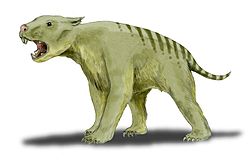| Ilaria Temporal range: | |
|---|---|
| Scientific classification | |
| Kingdom: | Animalia |
| Phylum: | Chordata |
| Class: | Mammalia |
| Infraclass: | Marsupialia |
| Order: | Diprotodontia |
| Family: | † Ilariidae |
| Genus: | † Ilaria Tedford & Woodburne, 1987 |
| Species | |
| |
Ilaria is an extinct genus of marsupial of the family Ilariidae, dating from the Late Oligocene of South Australia. Its diet consisted of leaves.

